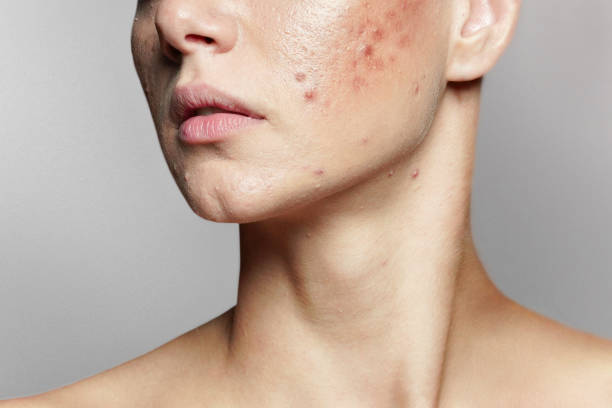Acne Treatment: Red Light and Blue Light Therapy – The New Standard in Acne Care

Strong 8k brings an ultra-HD IPTV experience to your living room and your pocket.
Introduction:
Acne is one of the most common skin conditions, affecting millions of people worldwide, from teenagers to adults. While there are various treatment options available, many people are turning to light therapy as a cutting-edge solution. Red light and blue light therapy, in particular, are emerging as the new standard in acne care. These non-invasive treatments offer promising results, often without the side effects associated with traditional acne medications.
In this article, we will explore how red light and blue light therapy work, their benefits, and why they are gaining popularity as effective acne treatments.
Understanding Acne: The Root Cause
Before diving into light therapy, it’s essential to understand what causes acne. Acne occurs when hair follicles become clogged with oil, dead skin cells, and sometimes bacteria. The sebaceous (oil) glands in the skin produce excess sebum, leading to clogged pores. This creates an environment where bacteria, particularly Propionibacterium acnes, can thrive, leading to inflammation and breakouts.
Acne can appear in different forms, including:
Blackheads: Open comedones that are clogged with oil and dirt.
Whiteheads: Closed comedones that appear as small, white bumps.
Papules: Small, red, tender bumps.
Pustules: Similar to papules but filled with pus.
Cysts and Nodules: Larger, deeper, painful lumps.
While acne is most commonly associated with hormonal changes during puberty, it can also affect adults due to stress, diet, genetics, and other factors.
Traditional Acne Treatments
Traditional treatments for acne typically include topical products, oral medications, or even physical procedures like chemical peels and laser treatments. However, these treatments can come with side effects, such as dryness, irritation, or increased sensitivity to sunlight. Some medications, like oral antibiotics or isotretinoin, also carry long-term risks and should only be used under the supervision of a healthcare provider.
As people seek alternatives with fewer side effects, light therapy has emerged as a promising non-invasive solution.
What Is Light Therapy?
Light therapy, also known as phototherapy, uses specific wavelengths of light to target and treat various skin conditions, including acne. The two most commonly used types of light therapy for acne are blue light therapy and red light therapy.
Blue Light Therapy
Blue light therapy primarily targets the surface of the skin, using wavelengths of light between 400-470 nanometers. The blue light penetrates the skin and kills the acne-causing bacteria, particularly P. acnes, which thrive in clogged pores. By reducing bacterial growth, blue light therapy helps to reduce the inflammation and infection that leads to breakouts.
Research has shown that blue light therapy can be highly effective in reducing acne severity. Studies suggest that exposure to blue light for several weeks can significantly reduce the number of acne lesions, with visible results within a few weeks of regular treatment.
Benefits of Blue Light Therapy:
Targets acne-causing bacteria: Blue light therapy directly kills P. acnes, preventing inflammation and breakouts.
Non-invasive: Unlike other acne treatments, blue light therapy does not require needles or surgery.
Minimal side effects: Unlike topical treatments like benzoyl peroxide or salicylic acid, blue light therapy is gentle on the skin and rarely causes irritation.
Suitable for all skin types: Blue light therapy is safe for individuals with various skin types, including sensitive skin.
Red Light Therapy
Red light therapy, on the other hand, uses longer wavelengths of light, typically in the range of 600-650 nanometers. Unlike blue light, which primarily targets bacteria, red light penetrates deeper into the skin to promote healing and reduce inflammation. It works by stimulating the production of collagen and increasing circulation, which accelerates the skin's natural healing process.
For acne, red light therapy helps to reduce redness and inflammation associated with breakouts. Additionally, it can enhance the skin’s overall texture and promote faster healing of existing acne lesions, preventing scarring.
Benefits of Red Light Therapy:
Reduces inflammation: Red light helps to calm inflamed skin, reducing redness and irritation caused by acne.
Promotes healing: Red light stimulates collagen production, speeding up the healing process of acne scars and lesions.
Non-invasive: Like blue light therapy, red light therapy does not require needles or surgery.
Enhances skin texture: Red light therapy can help improve the overall appearance of the skin, making it smoother and more even-toned.
How Red Light and Blue Light Therapy Work Together
While blue light therapy addresses the bacterial causes of acne, red light therapy works to calm inflammation and speed up healing. Together, these therapies create a synergistic effect that can provide comprehensive acne treatment.
When used in combination, red and blue light therapies can target multiple aspects of acne. Blue light tackles the underlying bacteria responsible for acne, while red light reduces the visible symptoms, such as redness and inflammation, and helps the skin heal faster. Many light therapy devices are now designed to deliver both red and blue light, allowing users to benefit from both wavelengths in a single treatment session.
The Benefits of Light Therapy for Acne Treatment
1. Non-invasive and painless Unlike other acne treatments that may involve harsh chemicals, needles, or lasers, light therapy is completely non-invasive and pain-free. There is no downtime or recovery period, and treatments are typically quick, lasting only 15 to 30 minutes.
2. Reduced risk of side effects Traditional acne treatments, such as oral antibiotics, can cause unwanted side effects like dry skin, photosensitivity, or antibiotic resistance. Light therapy, on the other hand, has a much lower risk of side effects. Blue and red light therapy are gentle on the skin and do not typically cause irritation or dryness.
3. Effective for all types of acne Both blue and red light therapy have been shown to be effective for treating mild to moderate acne, including blackheads, whiteheads, and pustules. For more severe cases, light therapy can be used in conjunction with other acne treatments to help reduce symptoms.
4. Suitable for all skin types Unlike some acne treatments that can irritate sensitive skin, light therapy is safe for individuals with all skin types, including sensitive or oily skin.
5. Convenient and easy to use Many light therapy devices are available for home use, allowing users to conveniently treat their acne from the comfort of their own home. These devices are often portable, and many can be used as part of a regular skincare routine.
How to Use Red Light and Blue Light Therapy for Acne
When using red and blue light therapy for acne, consistency is key. Here are some tips for effective treatment:
1. Choose the right device: There are various at-home light therapy devices available, such as handheld devices, masks, and panels. Be sure to select a device that emits the correct wavelengths of light for acne treatment (blue light for bacteria and red light for inflammation).
2. Follow the manufacturer's instructions: Different devices have different treatment protocols. Be sure to follow the recommended usage guidelines, including how long to use the device and how often.
3. Be consistent: Light therapy requires regular use to see results. Most treatments are recommended 2-3 times per week for several weeks, but the frequency may vary depending on the severity of your acne and the specific device you're using.
4. Protect your skin: While light therapy itself is generally safe, it’s always a good idea to apply sunscreen after using the device, especially if you have sensitive skin.
5. Combine with a good skincare routine: For optimal results, combine light therapy with a solid skincare routine that includes cleansing, exfoliating, and moisturizing. Be sure to use non-comedogenic products that won’t clog your pores.
The Future of Acne Treatment: A Revolution in Skincare
The use of red and blue light therapy in acne treatment is a significant advancement in the field of dermatology. As research continues to show its effectiveness, light therapy is becoming a mainstream option for those seeking a gentle, effective solution for acne. The non-invasive nature, combined with minimal side effects and promising results, makes it an appealing choice for those looking to avoid harsher treatments.
However, while light therapy can be highly effective, it’s essential to remember that acne is a complex condition that can vary from person to person. What works for one individual may not work for another. Therefore, it’s always a good idea to consult with a dermatologist before starting any new treatment, including light therapy.
In conclusion, red and blue light therapy represent the future of acne care, offering a safer and more convenient way to treat breakouts without the need for harsh chemicals or medications. With their ability to target the root causes of acne, these therapies are quickly becoming a go-to option for individuals seeking clearer, healthier skin.
See the full article
Note: IndiBlogHub features both user-submitted and editorial content. We do not verify third-party contributions. Read our Disclaimer and Privacy Policyfor details.


